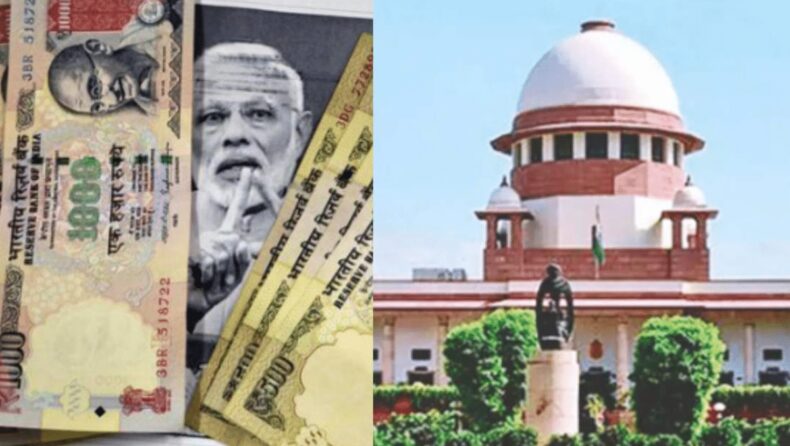Supreme Court today released a final verdict on the 2016 Demonetization Petitions concerning the ban of specifically 500 and 1000 rupee notes.

Supreme Court Justice BV Nagarathna claims that legislation, not a notification, was required to abolish the 500 and 1,000 series notes.
On the issue of the Center’s authority under section 26(2) of the RBI Act, Justice Nagarathna dissented from the ruling of the majority.
She claimed that the process of demonetization should not have been carried out through a public announcement and that Parliament should have debated the law.
A group of 58 petitions contesting the demonetization initiative announced by the Center on November 8, 2016, led to the Supreme court’s ruling.
To combat corruption and target unreported “black money,” Prime Minister Modi personally oversaw the shocking decision to ban 86% of the currency in circulation in November 2016.
Justice BV ruled that the government’s announcement of demonetization was “illegal” and that the process to prohibit notes could not have been started by the Center. Nagarathna expressed her disagreement today after the Narendra Modi-led Centre’s decision to implement demonetization was backed by a Supreme Court Constitution bench by a 4:1 majority.
She referred to the Centre’s November 8, 2016, notification as “illegal” and agreed with the petitioners who were contesting it that, by section 26 of the Reserve Bank of India Act, the RBI’s central board should have independently recommended demonetization rather than doing so on the advice of the government.
Justice Nagarathna commented on the issue says, “I believe that the action of demonetization by notification on November 8 was illegal. But since it was in 2016, the status quo ante cannot be reinstated, she ruled, adding that demonetisation was “an exercise of authority, against the law, and hence illegitimate.”
she added that she was only challenging the legal perspective and not the exercise’s “noble intentions,” but that the way it was carried out was not legitimate.
According to her, in the RBI Act, the board of the Reserve Bank of India should recommend demonetisation, however in this instance, the Centre addressed a letter to RBI on November 7 advising such a decision.
Additionally, she ruled that rather than an executive notification, a Parliamentary Act may have been used to start the demonetisation process, as it had in the past.
Phrases like “as requested by Centre government” demonstrate there was no independent application of mind by RBI, Justice Nagarathna remarked after reviewing the documents and data provided by the Centre and RBI.

Although, Today, the Supreme Court affirmed the Center’s 2016 verdict on demonetization and rejected several appeals. Whether or not the goal was accomplished is irrelevant, according to Justice BR Gavai.
Since the Reserve Bank of India and the government have consultations, the decision-making process at the Center cannot be incorrect, he claimed.
Supreme Court Final Verdict
Prime Minister Narendra Modi’s 2016 note ban was supported by the Supreme Court today, which ruled that the move could not be criticized just because it was made at the national level.
According to Justice BR Gavai, the demonetization process cannot be invalidated based on proportionality.
“It cannot be stated that the allowed term of 52 days for the exchange of notes is inappropriate,” he remarked.
Later Justice BR Gavai observed, “Even though nine questions were framed, we have reframed six issues.
“The word “any” stated in Section 26 of the RBI Act cannot be given a restrictive definition. After consulting with the Central Board of RBI, the Center must act. For six months, the Center and RBI had consultations ” he added.
Final Supreme Court decision was made with a margin of 4:1 majority in the favour of Demonetization decision closing and protecting it from any further legal action.













